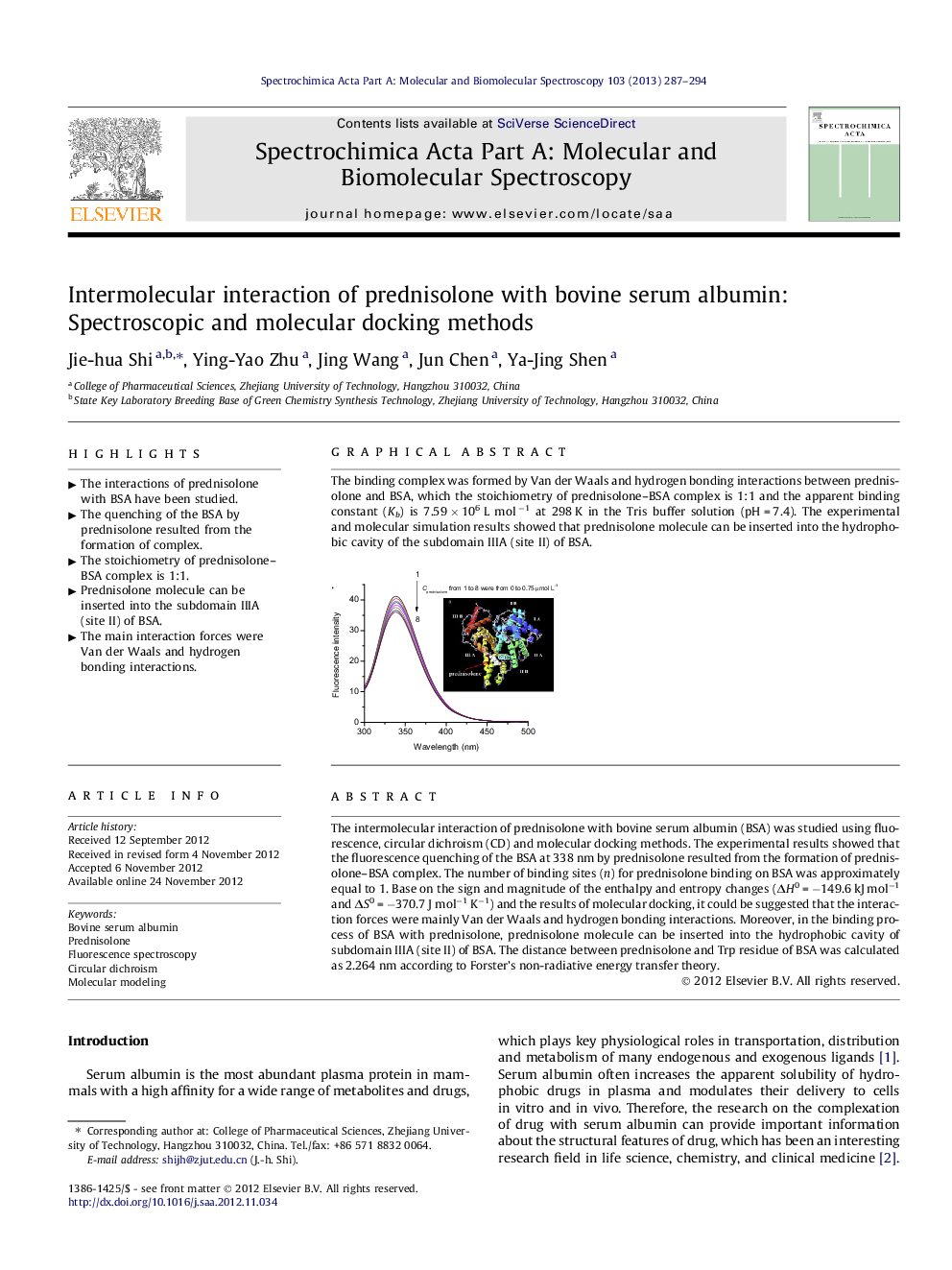| Article ID | Journal | Published Year | Pages | File Type |
|---|---|---|---|---|
| 1232062 | Spectrochimica Acta Part A: Molecular and Biomolecular Spectroscopy | 2013 | 8 Pages |
The intermolecular interaction of prednisolone with bovine serum albumin (BSA) was studied using fluorescence, circular dichroism (CD) and molecular docking methods. The experimental results showed that the fluorescence quenching of the BSA at 338 nm by prednisolone resulted from the formation of prednisolone–BSA complex. The number of binding sites (n) for prednisolone binding on BSA was approximately equal to 1. Base on the sign and magnitude of the enthalpy and entropy changes (ΔH0 = −149.6 kJ mol−1 and ΔS0 = −370.7 J mol−1 K−1) and the results of molecular docking, it could be suggested that the interaction forces were mainly Van der Waals and hydrogen bonding interactions. Moreover, in the binding process of BSA with prednisolone, prednisolone molecule can be inserted into the hydrophobic cavity of subdomain IIIA (site II) of BSA. The distance between prednisolone and Trp residue of BSA was calculated as 2.264 nm according to Forster’s non-radiative energy transfer theory.
Graphical abstractThe binding complex was formed by Van der Waals and hydrogen bonding interactions between prednisolone and BSA, which the stoichiometry of prednisolone–BSA complex is 1:1 and the apparent binding constant (Kb) is 7.59 × 106 L mol −1 at 298 K in the Tris buffer solution (pH = 7.4). The experimental and molecular simulation results showed that prednisolone molecule can be inserted into the hydrophobic cavity of the subdomain IIIA (site II) of BSA..Figure optionsDownload full-size imageDownload as PowerPoint slideResearch highlights► The interactions of prednisolone with BSA have been studied. ► The quenching of the BSA by prednisolone resulted from the formation of complex. ► The stoichiometry of prednisolone–BSA complex is 1:1. ► Prednisolone molecule can be inserted into the subdomain IIIA (site II) of BSA. ► The main interaction forces were Van der Waals and hydrogen bonding interactions.
